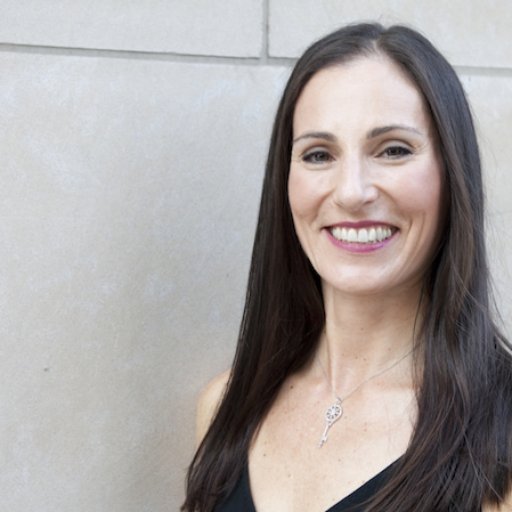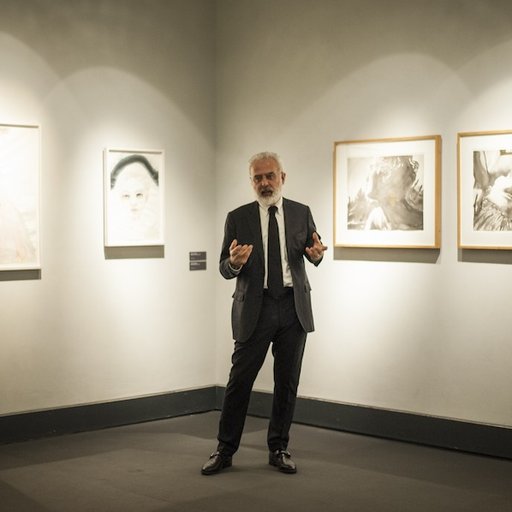In Heather Flow’s Lower East Side office, a large grid of intersecting painted sticks and colorful strands of artificial hair extensions spread across a white wall. It’s a work by the artist Amy Yao, who was part of the “Greater New York” show at MoMA PS1 in 2010, and is just the sort of distinctive, left-of-center piece that Flow—an art advisor specializing in the artists of her own generation—is attuned to noticing.
A PS1 employee in that institution's early, more freewheeling days, Flow later moved on to work for the American Federation of Arts, where she gave tours of Chelsea to trustees and eventually ended up brokering some deals. It took a friend to key her in to the fact that these Chelsea tours and deal-brokerings were not a hobby but actually a real job—that of an art advisor. She founded Flow Advisory in 2008, and since then has ascended to reign as the powerbroker of the Lower East Side art scene.
Before Frieze and NADA, Artspace spoke with the young advisor about how to collect emerging artists, and why collectors should take a slower approach at the fairs.
After your time at PS1 and the American Federation of Arts, you struck out on your own as an art advisor. You were quite young at the time.
I think I was 25, but I didn’t tell anyone how old I was. I could either see my age as a disadvantage or an advantage, and the advantage was that I was young and if I knew my generation of artists the best, I would be set for life. But I knew that it was going to be really terrible the first 10 years, because it’s much harder to advise on work that has no press and no market history. You can’t recite what someone else has said, and then after all of your researching, reading, and conversations with artists, you go and make… $150. [Laughs]
Is there anything distinct about your generation who graduated school around the time of the crash in 2008, by which time digital technology, like the smartphone, and social media were ubiquitous?
The moment there was a smartphone, our lives changed, and I think artwork is supposed to talk about changes like that. But you can see a lot of backlash to that. You can see this kind of obsession with aesthetics from the ’70s and the ’80s, but it is not, to me, sincere, because the work that was being made at that time was speaking about that time. This doesn’t mean it can’t be part of a universal conversation—good artwork should be—but it is also grounded in its own period of time.
As for my generation, it is especially interesting because the artists have seen both sides. Maybe when they were growing up, they didn’t have Facebook, but now they do, so they have a knowledge of what it was like before and a knowledge of what it is like now and are able to compare and contrast.
Of course, there is a lot of speculation around artists today in that generation—they’re easy targets. How do you deal with this phenomenon as an advisor?
I’m pretty specific about the people I work with, and we are not playing the flipping game. That is just a totally different approach to collecting than to what I do. But it is everywhere. What is interesting though is that it is only for certain types of medium, like painting and maybe a photograph or two thrown in there. But I think that what I’m interested in is work that is having a different conversation than a lot of those pieces.
Like what?
I don’t want to corner myself, but I guess I’m trying to say that if you strictly follow the auctions, the work being made by “emerging” artists is completely off. I think if you were just in Berlin for Gallery Weekend and walked around, you’d see work that is so dissimilar to the work at auctions. There is this larger variety of artists speaking about such different things. They’re talking about the synthetic experience; they’re talking about more than the gesture on canvas. So I think that there is a problem for young collector to just look at auctions, because it is not giving you the full view. And that is going to be really disappointing in 10 years when the artists who were your age who you could easily have afforded, are now out of your budget.
How do you get to know the taste of your clients?
I can guess pretty well. You can tell by the way someone speaks and dresses, and once you see a few shows with them, I know they are going to like this work and I bet in two years, after seeing more art work, they will end up liking this artist. It's the way they are dressed, the way they write. If they are formal, it can be an Isa Genzkin, because her work is super formal, but not necessarily a Franz West. I really like my clients and like spending time with them. And that is part of that too: the time you spend together looking at things.
A client and I have a running joke about this artist that every time there is an available work I email it to him. I know that he doesn’t want it. He’s like, “I know this is interesting, I just don’t want to own this work.” And I am like, “You know you are going to want to own it in 10 years and it is going to be worth too much money for you to own.” And now we have a running joke and I’m like, “Another work!”
In New York are you looking mostly on the Lower East Side galleries for these artists? What's your relationship with this more aggressively hip neighborhood?
They were starting when I was starting, besides Reena Spaulings. We all grew up at the same time. There were few dealers whom I'd get together with and be like, “How are you doing? I need a new jacket. I don’t know if I can afford a new jacket…. Are you going to take a vacation? Yeah, I’m hoping to borrow a friend’s house.” But I think what is happening around there is so interesting. It is exciting to know that some of the artists who had their first shows on the Lower East Side now have been included in the Venice Biennale and have substantial museum shows because it really proves that New York still has a generation that is young and making art work. I think that the way that price points are in New York today, it’s not so easy.
Do you have advice for people looking to buy work of younger artists at Frieze or NADA this week, artists who might not have yet received critical attention?
I think it is good to know context. Who are their peers? What kind of work did they make in the past—even if the past was last year in their MFA program. You want to see if there is a progression. Sometimes there are certain young artists that I like who are not always consistent but there is a sense of drive there. They keep trying and keep trying and every third time they do something that is really good. I would much rather look at that artist than an artist who is consistently safe, because at some point, the inconsistent one will really find a successful strategy.
To know this sort of back story, it would seem like a collector needs to do a lot of homework before the fair, especially if they are new to the art world.
It is best to approach an art fair as a method for research, if you are a brand new collector. I’m really big on preparing and fully understanding the breadth of the art world before you make a decision, because I think that is a trap that a lot of people fall into: they see something at the fair and feel the energy of other people looking at the artwork and they go ahead and make an acquisition. It’s not that it’s going to be bad necessarily, but maybe it doesn’t fall in line with how their collection will develop. So really taking your time is best. It’s hard because the art market moves with such velocity now. It’s really hard to slow down. You feel like, “Oh my god, if I don’t get this now, maybe next year it will be four times the price and I won’t be able to afford it.” If that happens, that’s okay, let it go. There are so many things right now that you don’t need to make a game-time decision.
So you suggest a slowed-down approach at the fair to maximize a buyer’s time spent in the aisles?
Everyone appreciates when things are slowed down. Art fairs bring together galleries from cities where you normally can’t travel, especially if you have a full time job. It allows you an opportunity to sit down and talk with galleries. So before the fair, I would make a list of the galleries who you’ve never met but like and make it a point to meet them and introduce yourself. Spend time with them. That is a big reason why so many galleries do fairs—it’s not just for selling work, it is to meet new collectors. They are open and they want to meet you.
The other thing would be, if there is a gallery you already know that you like, I would call or email them and let them know that you want to stop by and want to talk more about this artist. I would do it even before the opening of the fair.
Fairs are so time-sensitive though, with much of the work sold on the first day. How can collectors forge relationships in this pressure-cooker atmosphere?
I would say that the opening day would not be the time or the place, but after that, especially over the weekend, if there are galleries that you know that you like, go and talk with them, and ask them to tell you more about their program and what they have coming up, because they are there, you know? The resource is there, and maybe you don’t always travel to Berlin, or Dusseldorf, or London. They will also learn your taste and recommend an artist who maybe they are going to start working with. The art world is really important and part of that is building a network of people who you trust.
When a buyer does find a piece, what’s your advice for negotiating?
I would say that sometimes people try to negotiate too hard. I’ve seen a few young collectors come at it super strong. And maybe it is how it is done in other industries, but in the art world, it is not really a good move because it just is off putting. So I would say that it’s appropriate to ask for a discount, but I would ask what kind of discount they can provide, and if you want to ask for more than that, then go there. But off the bat, saying, “Can you give me a 25 percent discount?” is not appropriate if you’ve not done business with the gallery before, especially for younger artists, too, where the price point is already low. The gallery needs to cover their cost.
What’s bad art fair etiquette?
You should not touch artwork! You see people touching the works as if it were on display. The other really big piece of advice that I have is to wear comfortable shoes. That’s how you can tell who is a good collector or advisor: by heel height.



























